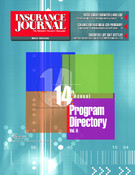The carrier executive tried to pin down agents on what they wanted from their insurers. Among the vague responses of exclusivity, underwriting authority, respect and long-term relationships, one complaint stood out.
“When asked about why he wanted to change carriers, one agent said, ‘I don’t feel the love,'” quipped Margaret Zechlin, senior vice president and business leader at GE Insurance Solutions.
At a recent meeting of the National Association of Professional Surplus Lines Offices, Zechlin blamed the brief tenure of many agent-carrier relationships on a lack of specificity.
The keys to a successful carrier/managing general agency relationship don’t rely on the love or any of the other vaguely expressed needs. Instead, goal clarity, objective alignment, communication, codification, performance assessment, and a solid exit strategy are essential, according to Zechlin.
Five years in average
According to GE numbers, the average program duration with an agency is five years, and most relationships fail because neither side of the contract sets up realistic expectations.
To create better contract, the first step is to clearly define expectations before entering into a carrier contract. This means establishing “SMART” goals. SMATRT is an acronym for specific, measurable, actionable, responsibilities identified and tied to timelines, Zechlin said.
For example, agencies that rank underwriting authority and autonomy as a priority can solidify that goal by delineating line versus staff responsibilities; agree on who is doing what and by when; and agree to what are the desirable and measurable outcomes, she said.
Even more important, however, is determining whether the potential carrier partner is a good cultural fit with the agency, Zechlin stressed. “Corporate culture” refers to the shared values and practices of the insurer, and the measurable goal is a partnership that supports profitable growth and meets organizational goals and objectives, she said.
Zechlin recommended four steps in assessing cultural compatibility:
1) conducting a cultural assessment by examining elements such as the insurer’s risk tolerance, management and reward system;
2) conducting an honest assessment of organizational fit by each attribute;
3) reviewing each attribute with the insurer; and
4) establishing a mutually beneficial operating agreement.
After the honeymoon
After the “honeymoon is over,” an agent must understand that the insurer will be evaluating the agency, said Lois J. Mazza, vice president and sales executive for GE’s Select Markets program.
Mazza’s company compiles a program metric scorecard, shared monthly with its managing general underwriters and closely examining how each program administrator manages its program, portfolio and business in general. Areas under the microscope include monthly and year-to-date written premiums, price monitor, policy issuance, hit ratio and retention ratio. This system helps both GE and the program administrator determine whether they will meet their goals, how they are performing compared with the prior year, and if there are any downward (or upward) trends, Mazza said.
Internally, GE conducts an annual review of the program administrator’s business, examining the book of business as a whole, including risks and opportunities, threats to business, and regulatory or legal changes that might impact the business, Mazza added.
Underwriting visits, underwriting audits and joint planning sessions, which help keep the insurer and the agency on track, round out the communication picture.
Once communication is clear and specifications made, both sides are more likely to adhere to a long-term partnership, Mazza said.
Was this article valuable?
Here are more articles you may enjoy.


 Coral Gables, Florida Tops Beverly Hills as Ritziest Home Market in US
Coral Gables, Florida Tops Beverly Hills as Ritziest Home Market in US  Former MLB Player, 3 Others Charged with Staging Auto Accident in Miami
Former MLB Player, 3 Others Charged with Staging Auto Accident in Miami  Harvard Study Again Stirs the Pot on Demotech Ratings of Florida Carriers
Harvard Study Again Stirs the Pot on Demotech Ratings of Florida Carriers  Grand Jury Indicts ‘Hole in Won’ Owner on Prize Insurance Fraud Charges
Grand Jury Indicts ‘Hole in Won’ Owner on Prize Insurance Fraud Charges 


